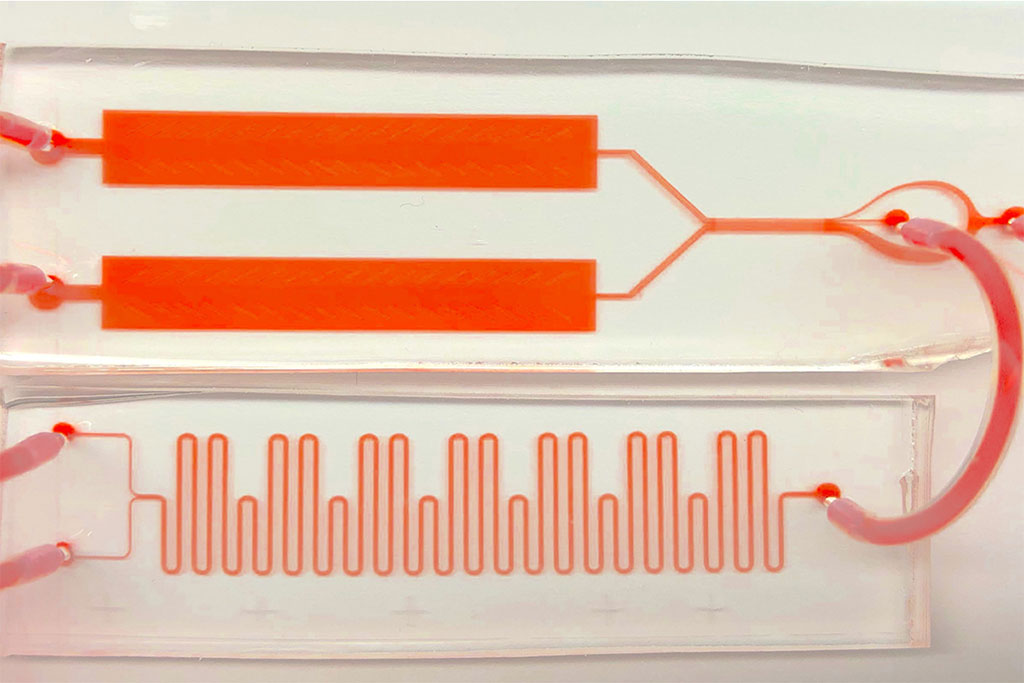New Blood-Test Device That Monitors Blood Chemistry Continually Could Be Used to Spot SARS-CoV-2
By LabMedica International staff writers
Posted on 23 Dec 2020
A new lab-on-a-chip device that can continuously sense levels of virtually any protein or molecule in the blood could be transformative for disease detection, such as COVID-19.Posted on 23 Dec 2020
Researchers at Stanford (Stanford, CA, USA) have developed a device dubbed the “Real-time ELISA” that is able to perform many blood tests very quickly and then stitch the individual results together to enable continuous, real-time monitoring of a patient’s blood chemistry. Instead of a snapshot, the researchers end up with something more like a movie. In their study, the researchers used the device to simultaneously detect insulin and glucose levels in living diabetic laboratory rats. But the researchers say their tool is capable of so much more because it can be easily modified to monitor virtually any protein or disease biomarker of interest.

Image: The RT-ELISA prototype (Photo courtesy of Caitlin Maikawa)
Technologically, the system relies upon an existing technology called Enzyme-linked Immunosorbent Assay - ELISA (ee-LYZ-ah) for short. ELISA has been the “gold standard” of biomolecular detection since the early 1970s and can identify virtually any peptide, protein, antibody or hormone in the blood. An ELISA assay is good at identifying allergies, for instance. It is also used to spot viruses like HIV, West Nile and the SARS-CoV-2 coronavirus that causes COVID-19. The Real-time ELISA is essentially an entire lab within a chip with tiny pipes and valves no wider than a human hair. An intravenous needle directs blood from the patient into the device’s tiny circuits where ELISA is performed over and over.
The researchers liken the process to making a protein sandwich in which two molecules, or antibodies, are attached to the protein of interest. One antibody can be custom-tailored to seek out and latch onto the specific biomarker. Once it is attached, the second antibody is activated. This antibody fluoresces, or glows, which is monitored by a high-speed camera. Based on how brightly the blood sample glows, scientists can determine not only whether the target protein is present but also its concentration. The more target molecule exists in the blood, the brighter the sample will be.
Real-time, continuous blood monitors have been developed for a few blood markers like glucose, lactate and oxygen, but extending the technology beyond those few examples has proven “exceedingly difficult.” This is why the Real-time ELISA’s adaptability to myriad proteins is especially promising. The Real-time ELISA might also prove a boon to biomedical research, providing instantaneous and detailed feedback on the effectiveness of drugs and other therapies, but the researchers think the device will be most useful in intensive care units and emergency rooms, where time and accuracy are of the essence.
For instance, in the “cytokine storm” triggered by the disease COVID-19, the researchers envision a future version of Real-time ELISA telling doctors whether cytokine levels in a patient are decreasing in response to treatment. The researchers are already at work modifying the device to measure a key cytokine, known as IL-6. Currently, IL-6 tests must be sent out to a lab for processing and it takes three days to get results back.
“In sepsis, time is key - every hour that goes by, your probability of dying increases by 8%,” said Tom Soh, a professor of electrical engineering and of radiology at Stanford. “Patients don’t have three days for a single test. That could have life-saving implications.”
Related Links:
Stanford




 assay.jpg)








